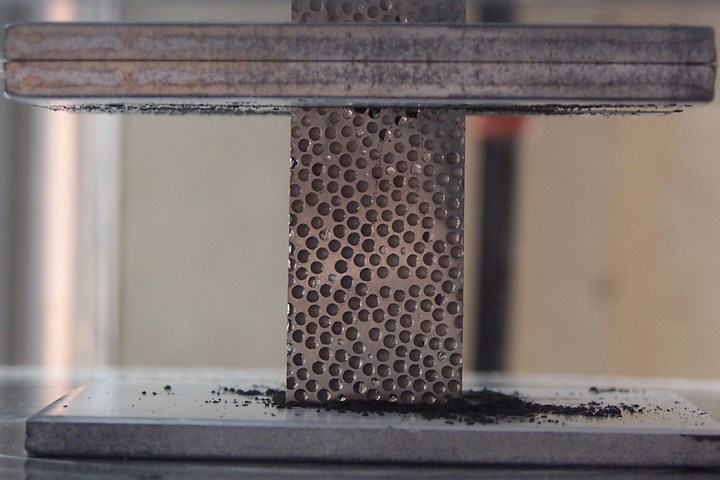
The professor of mechanical and aerospace engineering has spent years developing composite metal foams and now is studying how they may be used in industrial, aerospace, and military applications. As its name implies, the CMF is a foam, similar in design to a foam sponge, that is made of metal. It is constructed using metallic hollow spheres of carbon, steel, or titanium that are embedded in a metallic matrix of aluminum, steel, or other metallic alloys.
The research team has been examining the properties of these metal foam materials and has discovered that they are extremely durable and heat resistant. In laboratory testing, a piece of steel-steel CMF (2.5 x 2.5 x 0.75 inches) was able to withstand eight minutes of 800-degree Celsius heat before the entire piece of foam heated up. This duration is twice as long as standard steel, which reaches 800 degrees in four minutes. And unlike standard steel, which expands rapidly when heated, these CMFs expand at a slow and steady rate, making them an extremely stable and efficient form of insulation. “The presence of air pockets inside CMF make it so effective at blocking heat, mainly because heat travels more slowly through air than through metal,” says Rabiei.
Earlier studies by Rabiei and her team revealed that CMFs have impressive impact resistance against high-velocity projectiles and are also effective at shielding against radiation. Initial bullet tests showed that an inch-thick piece of the CMF was all that was needed to stop a bullet. In these tests, the bullet left an indentation of only 8mm, which is far below the 44mm armor indentation limit set by the National Institute of Justice (NIJ).
Moving way beyond bullets, the team pushed the boundaries of the CMF material by firing 7.62 x 63 millimeter M2 armor-piercing projectiles at a small piece of a composite armor made from Rabiei’s composite metal foam. The results are nothing short of astounding with the projectiles disintegrating on impact. Iron Man, call your office.
The team also worked with the Department of Energy’s Office of Nuclear Energy on a series of tests that revealed the CMF is effective at blocking X-rays, gamma rays, and neutron radiation. If it can be manufactured on an industrial scale, Rabiei’s composite metal foam may have a significant impact on military armor, aerospace design, and even in the nuclear power industry, which may be able to use the material in the containment of radiation and radioactive waste.




